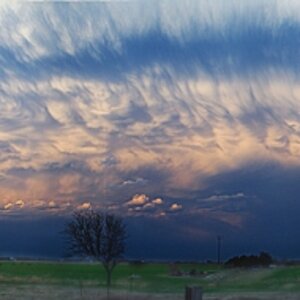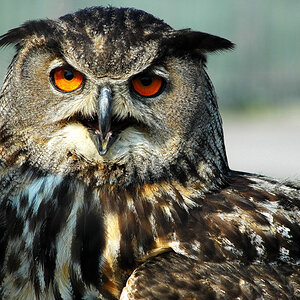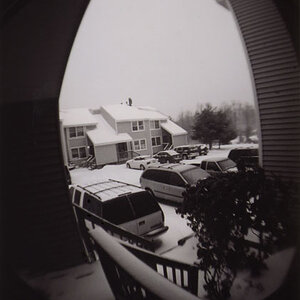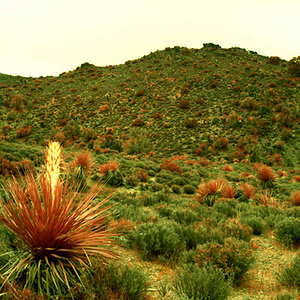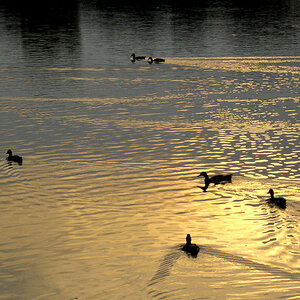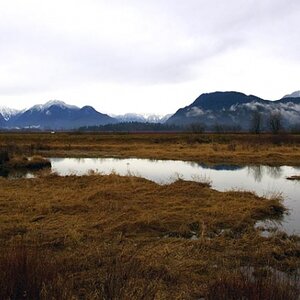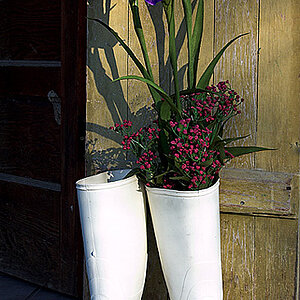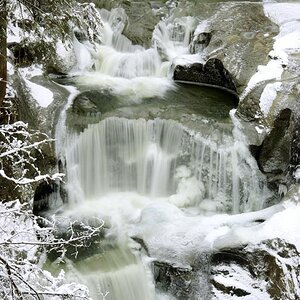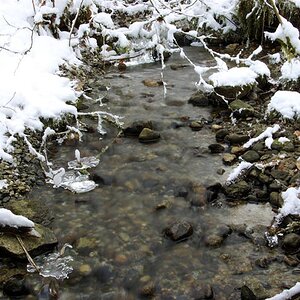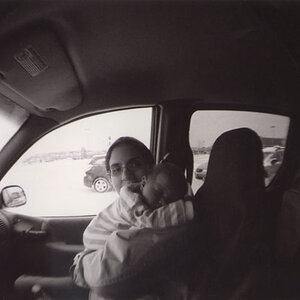Navigation
Install the app
How to install the app on iOS
Follow along with the video below to see how to install our site as a web app on your home screen.

Note: This feature currently requires accessing the site using the built-in Safari browser.
More options
You are using an out of date browser. It may not display this or other websites correctly.
You should upgrade or use an alternative browser.
You should upgrade or use an alternative browser.
What lens to buy next for Nikon D3300
- Thread starter P_nut92
- Start date
- Joined
- Oct 3, 2013
- Messages
- 11,518
- Reaction score
- 4,788
- Location
- Louisville, Nebraksa - United States
- Can others edit my Photos
- Photos OK to edit
Well a lot depends on budget of course, me I'm a big fan of my 50 mm AFS-G 1.8, though for landscapes you might want something a bit wider.
If your on a budget I had a Sigma 17-50 2.8-4.5 that I picked up dirt cheap, and it was actually a great lens. I wound up selling it with one of my D5200's since the buyer needed a lens and I haven't replaced it yet, but it was a great little lens and I got it used for just a little over $100 so if you need a decent lens on a budget that might be a good option.
If you don't mind spending a bit more both Sigma and Tamron make a 17-50 mm and 18-50 mm lenses with a constant 2.8 aperture, the only thing to be aware of is that you'll need to make sure you purchase one with a built in AF motor for use with your 5300 since it needs lenses with the built in motor and some older versions of these lenses don't have built in motors so you'll need to be sure that the you get one of the newer versions with the built in AF motor.
You can step up from there by looking at perhaps something in the 17-70 mm range which will give you a bit more zoom and be a little more versatile, or if you really have a big budget to work with the Nikkor 24-70 mm 2.8 is highly regarded but of course it's also a bit on the expensive side.
If your on a budget I had a Sigma 17-50 2.8-4.5 that I picked up dirt cheap, and it was actually a great lens. I wound up selling it with one of my D5200's since the buyer needed a lens and I haven't replaced it yet, but it was a great little lens and I got it used for just a little over $100 so if you need a decent lens on a budget that might be a good option.
If you don't mind spending a bit more both Sigma and Tamron make a 17-50 mm and 18-50 mm lenses with a constant 2.8 aperture, the only thing to be aware of is that you'll need to make sure you purchase one with a built in AF motor for use with your 5300 since it needs lenses with the built in motor and some older versions of these lenses don't have built in motors so you'll need to be sure that the you get one of the newer versions with the built in AF motor.
You can step up from there by looking at perhaps something in the 17-70 mm range which will give you a bit more zoom and be a little more versatile, or if you really have a big budget to work with the Nikkor 24-70 mm 2.8 is highly regarded but of course it's also a bit on the expensive side.
Mr.Photo
No longer a newbie, moving up!
- Joined
- Oct 4, 2014
- Messages
- 332
- Reaction score
- 138
- Location
- Vermont
- Can others edit my Photos
- Photos NOT OK to edit
This question comes up every time someone gets a new camera. Truth is that for landscapes, and most general photography the Nikon "kit" lenses are hard to beat. A question that I ask everybody who post this question is "Why do you feel that your kit lens is not good enough"? Most problems people have with kit lenses comes down to user error, and not understanding what is needed to make a proper photograph.
Also portraits and landscapes are two entirely different scenarios and typically require different lenses. While zooms can give you a little bit of both, most will compromise somewhere for the convenience of zooming. Portraits usually are done with telephoto lenses from 70mm and up while landscapes are typically done with wider angle lenses (50mm or less). Also you don't need a fast aperture lens typically for landscapes as you want to use a smaller aperture to increase depth of field to make everything in the photo sharp. Portraits lenses benefit from a faster aperture to create soft backgrounds and isolate the subject.
Again the Nikon "kit" lenses has consistently been tested and reviewed as one of the best budget zoom lenses Nikon has ever made and bundled with a camera. I have been shooting more than 4 years now, and while I've upgraded from the "kit" lens I still have and use mine regularly when I want to travel light or don't require a fast 2.8 aperture lens. Some of my best photo's to date have been taken with my "kit" lens.
Also portraits and landscapes are two entirely different scenarios and typically require different lenses. While zooms can give you a little bit of both, most will compromise somewhere for the convenience of zooming. Portraits usually are done with telephoto lenses from 70mm and up while landscapes are typically done with wider angle lenses (50mm or less). Also you don't need a fast aperture lens typically for landscapes as you want to use a smaller aperture to increase depth of field to make everything in the photo sharp. Portraits lenses benefit from a faster aperture to create soft backgrounds and isolate the subject.
Again the Nikon "kit" lenses has consistently been tested and reviewed as one of the best budget zoom lenses Nikon has ever made and bundled with a camera. I have been shooting more than 4 years now, and while I've upgraded from the "kit" lens I still have and use mine regularly when I want to travel light or don't require a fast 2.8 aperture lens. Some of my best photo's to date have been taken with my "kit" lens.
Alexr25
No longer a newbie, moving up!
- Joined
- Aug 31, 2014
- Messages
- 397
- Reaction score
- 84
- Location
- Australia, near Melbourne
- Can others edit my Photos
- Photos OK to edit
Don't dismiss the Nikon 18mm-55mm kit lens, the build quality might not be great but its optical performance is very good.
You have to decide whether you want to get a portrait lens or a landscape lens, the two are mutually exclusive.
For portraiture you need a mild telephoto (something between 70mm and 150mm) with a large maximum aperture, the 85mm f1.8 lens is quite a popular portrait lens for dx cameras.
For landscape you generally want a wide angle lens, and since being a good landscape photographer your camera will be mounted on a tripod , the max aperture of the lens is not very important. A wide angle zoom 11m-16mm or a 12mm-24mm would be suitable.
, the max aperture of the lens is not very important. A wide angle zoom 11m-16mm or a 12mm-24mm would be suitable.
You have to decide whether you want to get a portrait lens or a landscape lens, the two are mutually exclusive.
For portraiture you need a mild telephoto (something between 70mm and 150mm) with a large maximum aperture, the 85mm f1.8 lens is quite a popular portrait lens for dx cameras.
For landscape you generally want a wide angle lens, and since being a good landscape photographer your camera will be mounted on a tripod
 , the max aperture of the lens is not very important. A wide angle zoom 11m-16mm or a 12mm-24mm would be suitable.
, the max aperture of the lens is not very important. A wide angle zoom 11m-16mm or a 12mm-24mm would be suitable.TCampbell
Been spending a lot of time on here!
- Joined
- Mar 31, 2012
- Messages
- 3,614
- Reaction score
- 1,556
- Location
- Dearborn, MI
- Can others edit my Photos
- Photos OK to edit
Landscape photography typically calls for the entire scene to be in reasonable focus. Also, if you have to look around to take in the scene, then it probably calls for a wide angle lens. Wide angle lenses also help stretch the sense of depth of an image. Focus speed isn't an issue... it doesn't matter how snappy the focus motors may be. It turns out most kit lenses have all the attributes you need to get started in landscape photography.
You could spend more money and buy a new lens, but you probably won't notice any benefit from that until you gain more experience.
There are other things you may want, such as:
1. A tripod - this will let you shoot at very low ISO settings in any light (especially considering some of the best light is during the earliest or latest hours near sunrise or sunset when light is lower.) This gives you a stable platform and camera movement won't cause any blur.
2. A circular polarizer - but careful with this. This is a filter which threads onto the front of the lens. It's selective about the polarity of light that can pass through the filter depending on how you adjust it. It turns out there are a LOT of reflections in a typical image -- especially off foliage. By polarizing the light, the green foliage looks greener. The sky seems to be a richer shade of blue. White clouds stand out more. It has an overall effect of helping to intensify the color of an image. But... if used at very wide angles, you get a darkish banded region in the image where the polarization effect is strong... and that's surrounded by areas where the polarization is weaker. Another side-effect is that it does have the effect of reducing the total amount of light and that increases the exposure time... which is another reason why it's good to have that tripod I mentioned in #1.
3. A "neutral density" filter. Think of these as sunglasses for your lens. All they do is cut the light. It turns out they come in strengths... if you were to only buy one, then a 3 stop neutral density would be a good starting point. By cutting the light (beyond what you could do by just reducing the aperture opening in the lens) you can further extend the amount of time that the shutter can be open. This is particularly desirable when you have shots that include water. Waterfalls get smoothed out and it helps convey the sense of motion -- that the water is flowing. A 10 stop neutral density is even more extreme... but slightly trickier. You can't see well enough to focus through a 10 stop ND filter, so you have to focus with the filter removed... then switch off the auto-focus, attach the filter, then take the shot. Again... these extended shutter exposure times means the camera cannot move during the shot... so you'll need that tripod I mentioned up in #1.
4. A "gradient neutral density" filter. There's a variation of the stand "neutral density" in which half the filter is tinted... half is clear. The filter may transition from clear to tinted very rapidly (which they call a "hard" edge) or gently (which they call a "soft" edge). These allow you to darken the sky... but not darken the foreground. The result is a more balanced image. The trick to this filter is that it typically is a rectangular filter and it slides into a filter holder ... this allows you to decide exactly where you want the tint transition to appear in your image.
All of these will be less than the cost of a new lens.
Don't go run out and buy them all... I suggest you just buy a tripod and perhaps the circular polarizer. If you find yourself taking lots of images that include flowing water... then a neutral density filter would be a great addition. The "gradient neutral density" filters are a bit more advanced... hold off on those until you're comfortable with the camera and tripod.
Portraits, on the other hand, are completely different. A longer focal length lens with a lower focal ratio can allow you to create a tack-sharp subject with a beautifully blurred background. It's a very attractive look. Ideally this would be an 85mm or longer lens. Shorter focal length lenses (e.g. 50mm) get a weaker version of the effect.
You could spend more money and buy a new lens, but you probably won't notice any benefit from that until you gain more experience.
There are other things you may want, such as:
1. A tripod - this will let you shoot at very low ISO settings in any light (especially considering some of the best light is during the earliest or latest hours near sunrise or sunset when light is lower.) This gives you a stable platform and camera movement won't cause any blur.
2. A circular polarizer - but careful with this. This is a filter which threads onto the front of the lens. It's selective about the polarity of light that can pass through the filter depending on how you adjust it. It turns out there are a LOT of reflections in a typical image -- especially off foliage. By polarizing the light, the green foliage looks greener. The sky seems to be a richer shade of blue. White clouds stand out more. It has an overall effect of helping to intensify the color of an image. But... if used at very wide angles, you get a darkish banded region in the image where the polarization effect is strong... and that's surrounded by areas where the polarization is weaker. Another side-effect is that it does have the effect of reducing the total amount of light and that increases the exposure time... which is another reason why it's good to have that tripod I mentioned in #1.
3. A "neutral density" filter. Think of these as sunglasses for your lens. All they do is cut the light. It turns out they come in strengths... if you were to only buy one, then a 3 stop neutral density would be a good starting point. By cutting the light (beyond what you could do by just reducing the aperture opening in the lens) you can further extend the amount of time that the shutter can be open. This is particularly desirable when you have shots that include water. Waterfalls get smoothed out and it helps convey the sense of motion -- that the water is flowing. A 10 stop neutral density is even more extreme... but slightly trickier. You can't see well enough to focus through a 10 stop ND filter, so you have to focus with the filter removed... then switch off the auto-focus, attach the filter, then take the shot. Again... these extended shutter exposure times means the camera cannot move during the shot... so you'll need that tripod I mentioned up in #1.
4. A "gradient neutral density" filter. There's a variation of the stand "neutral density" in which half the filter is tinted... half is clear. The filter may transition from clear to tinted very rapidly (which they call a "hard" edge) or gently (which they call a "soft" edge). These allow you to darken the sky... but not darken the foreground. The result is a more balanced image. The trick to this filter is that it typically is a rectangular filter and it slides into a filter holder ... this allows you to decide exactly where you want the tint transition to appear in your image.
All of these will be less than the cost of a new lens.
Don't go run out and buy them all... I suggest you just buy a tripod and perhaps the circular polarizer. If you find yourself taking lots of images that include flowing water... then a neutral density filter would be a great addition. The "gradient neutral density" filters are a bit more advanced... hold off on those until you're comfortable with the camera and tripod.
Portraits, on the other hand, are completely different. A longer focal length lens with a lower focal ratio can allow you to create a tack-sharp subject with a beautifully blurred background. It's a very attractive look. Ideally this would be an 85mm or longer lens. Shorter focal length lenses (e.g. 50mm) get a weaker version of the effect.
Last edited:
- Joined
- Apr 9, 2009
- Messages
- 41,401
- Reaction score
- 5,706
- Location
- Iowa
- Website
- kharrodphotography.blogspot.com
- Can others edit my Photos
- Photos OK to edit
Yep, don't discount the Nikon 18-55 mm kit lens.
I recently picked up one that was refurbished to use for landscape and video.
I just added a nice 3rd party collapsible rubber lens hood to it that screws onto the filter threads on the front of the lens.
I too recommend the 85 mm to 200 mm focal lengths for portraits.
By the way, there is a TPF forum for Nikon Lenses | Photography Forum
I recently picked up one that was refurbished to use for landscape and video.
I just added a nice 3rd party collapsible rubber lens hood to it that screws onto the filter threads on the front of the lens.
I too recommend the 85 mm to 200 mm focal lengths for portraits.
By the way, there is a TPF forum for Nikon Lenses | Photography Forum
Similar threads
- Replies
- 13
- Views
- 484
- Replies
- 20
- Views
- 2K

